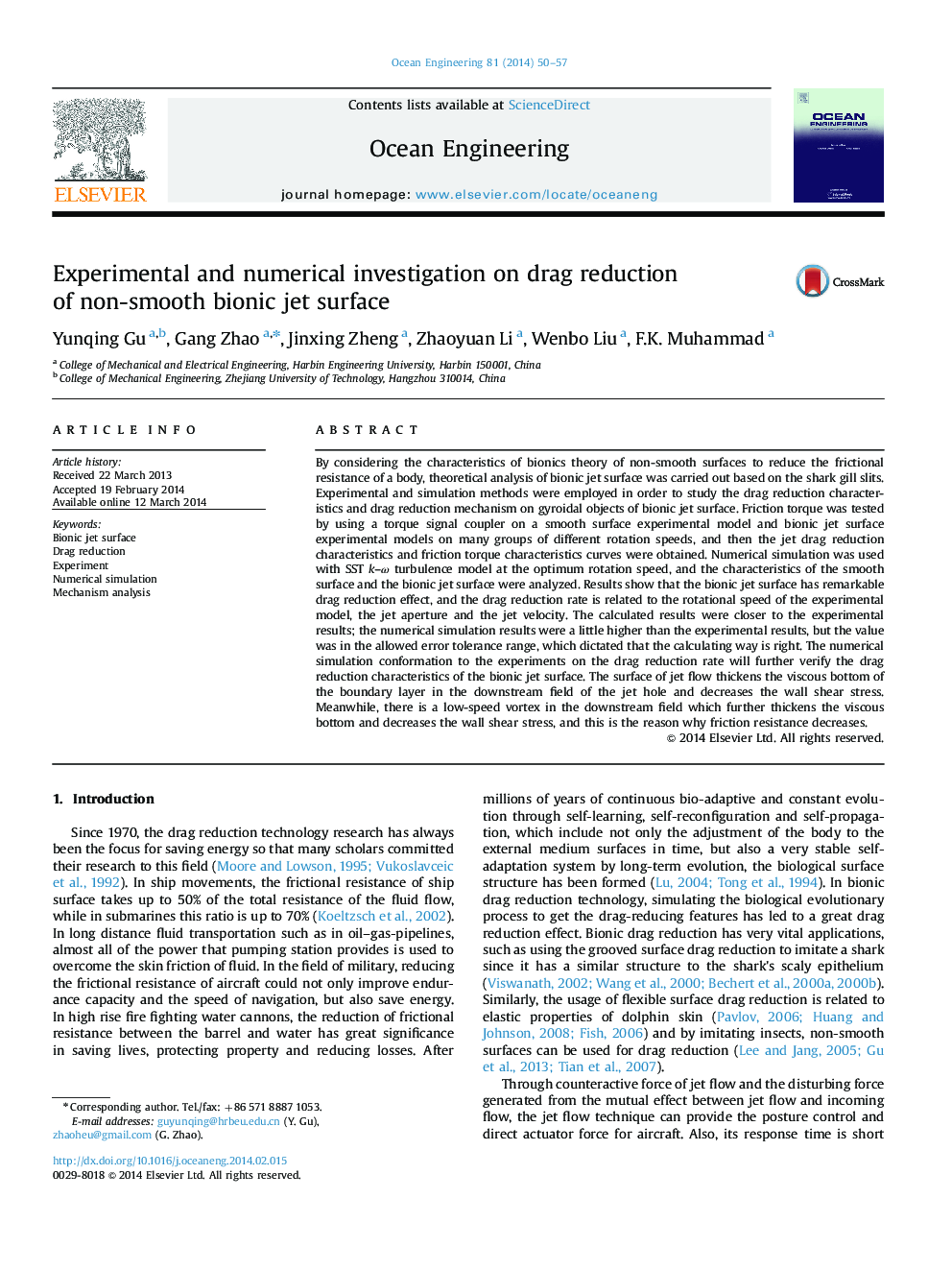| Article ID | Journal | Published Year | Pages | File Type |
|---|---|---|---|---|
| 8066354 | Ocean Engineering | 2014 | 8 Pages |
Abstract
By considering the characteristics of bionics theory of non-smooth surfaces to reduce the frictional resistance of a body, theoretical analysis of bionic jet surface was carried out based on the shark gill slits. Experimental and simulation methods were employed in order to study the drag reduction characteristics and drag reduction mechanism on gyroidal objects of bionic jet surface. Friction torque was tested by using a torque signal coupler on a smooth surface experimental model and bionic jet surface experimental models on many groups of different rotation speeds, and then the jet drag reduction characteristics and friction torque characteristics curves were obtained. Numerical simulation was used with SST k-Ï turbulence model at the optimum rotation speed, and the characteristics of the smooth surface and the bionic jet surface were analyzed. Results show that the bionic jet surface has remarkable drag reduction effect, and the drag reduction rate is related to the rotational speed of the experimental model, the jet aperture and the jet velocity. The calculated results were closer to the experimental results; the numerical simulation results were a little higher than the experimental results, but the value was in the allowed error tolerance range, which dictated that the calculating way is right. The numerical simulation conformation to the experiments on the drag reduction rate will further verify the drag reduction characteristics of the bionic jet surface. The surface of jet flow thickens the viscous bottom of the boundary layer in the downstream field of the jet hole and decreases the wall shear stress. Meanwhile, there is a low-speed vortex in the downstream field which further thickens the viscous bottom and decreases the wall shear stress, and this is the reason why friction resistance decreases.
Related Topics
Physical Sciences and Engineering
Engineering
Ocean Engineering
Authors
Yunqing Gu, Gang Zhao, Jinxing Zheng, Zhaoyuan Li, Wenbo Liu, F.K. Muhammad,
